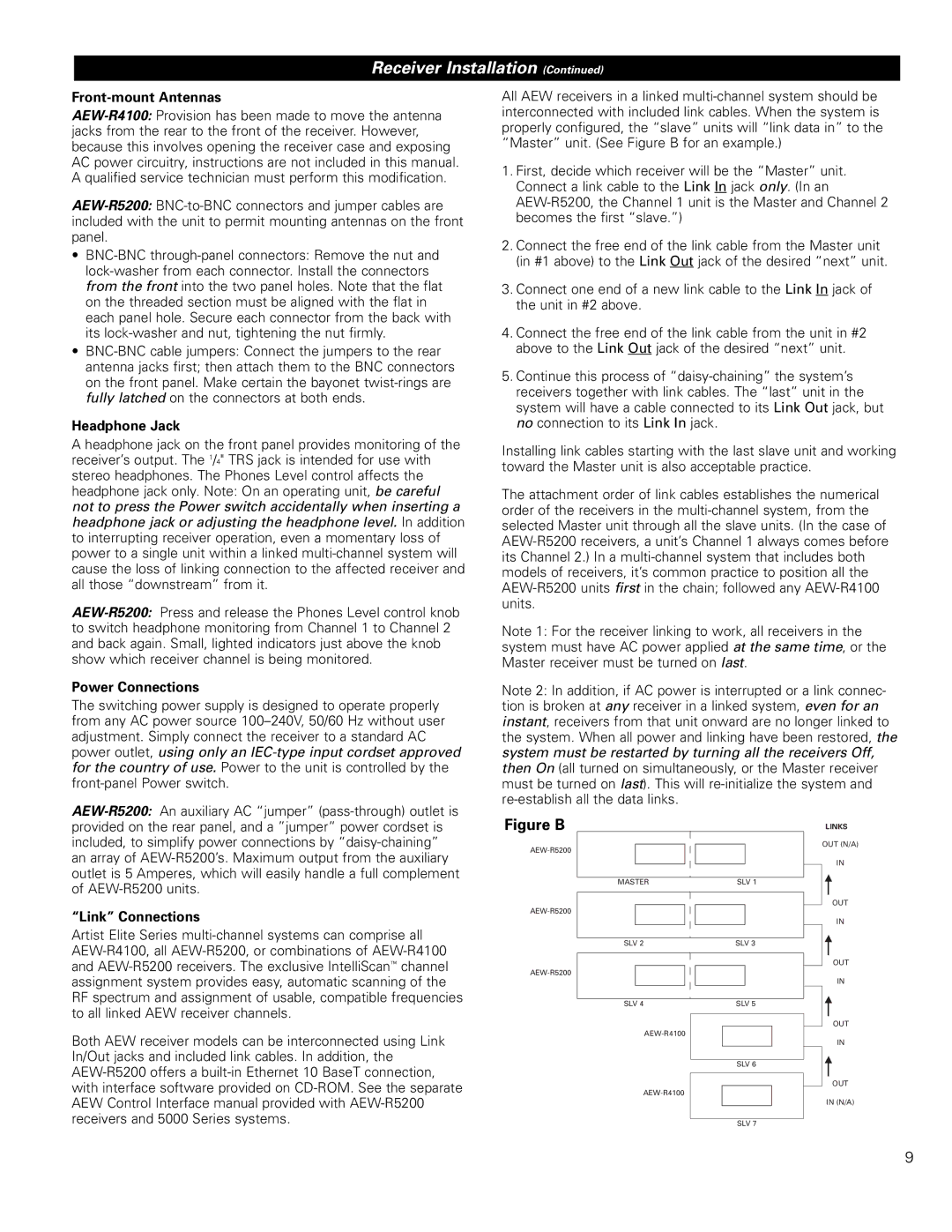
Receiver Installation (Continued)
Front-mount Antennas
•
•
Headphone Jack
A headphone jack on the front panel provides monitoring of the receiver’s output. The 1/4" TRS jack is intended for use with stereo headphones. The Phones Level control affects the headphone jack only. Note: On an operating unit, be careful not to press the Power switch accidentally when inserting a headphone jack or adjusting the headphone level. In addition to interrupting receiver operation, even a momentary loss of power to a single unit within a linked
Power Connections
The switching power supply is designed to operate properly from any AC power source
All AEW receivers in a linked
1.First, decide which receiver will be the “Master” unit. Connect a link cable to the Link In jack only. (In an
2.Connect the free end of the link cable from the Master unit (in #1 above) to the Link Out jack of the desired “next” unit.
3.Connect one end of a new link cable to the Link In jack of the unit in #2 above.
4.Connect the free end of the link cable from the unit in #2 above to the Link Out jack of the desired “next” unit.
5.Continue this process of
Installing link cables starting with the last slave unit and working toward the Master unit is also acceptable practice.
The attachment order of link cables establishes the numerical order of the receivers in the
Note 1: For the receiver linking to work, all receivers in the system must have AC power applied at the same time, or the Master receiver must be turned on last.
Note 2: In addition, if AC power is interrupted or a link connec- tion is broken at any receiver in a linked system, even for an instant, receivers from that unit onward are no longer linked to the system. When all power and linking have been restored, the system must be restarted by turning all the receivers Off, then On (all turned on simultaneously, or the Master receiver must be turned on last). This will
“Link” Connections
Artist Elite Series
Both AEW receiver models can be interconnected using Link In/Out jacks and included link cables. In addition, the
Figure B
MASTER |
| SLV 1 | ||||
|
|
|
|
|
|
|
|
|
|
|
|
|
|
SLV 2 |
| SLV 3 | ||||
|
|
|
|
|
|
|
|
|
|
|
|
|
|
SLV 4 |
| SLV 5 | ||||
|
|
|
|
| ||
|
|
|
|
| ||
|
|
|
|
| ||
|
|
|
|
|
|
|
|
|
|
|
|
|
|
SLV 6
LINKS
OUT (N/A)
IN
OUT
IN
OUT
IN
OUT
IN
OUT
IN (N/A)
SLV 7
9
